A God of Small Things
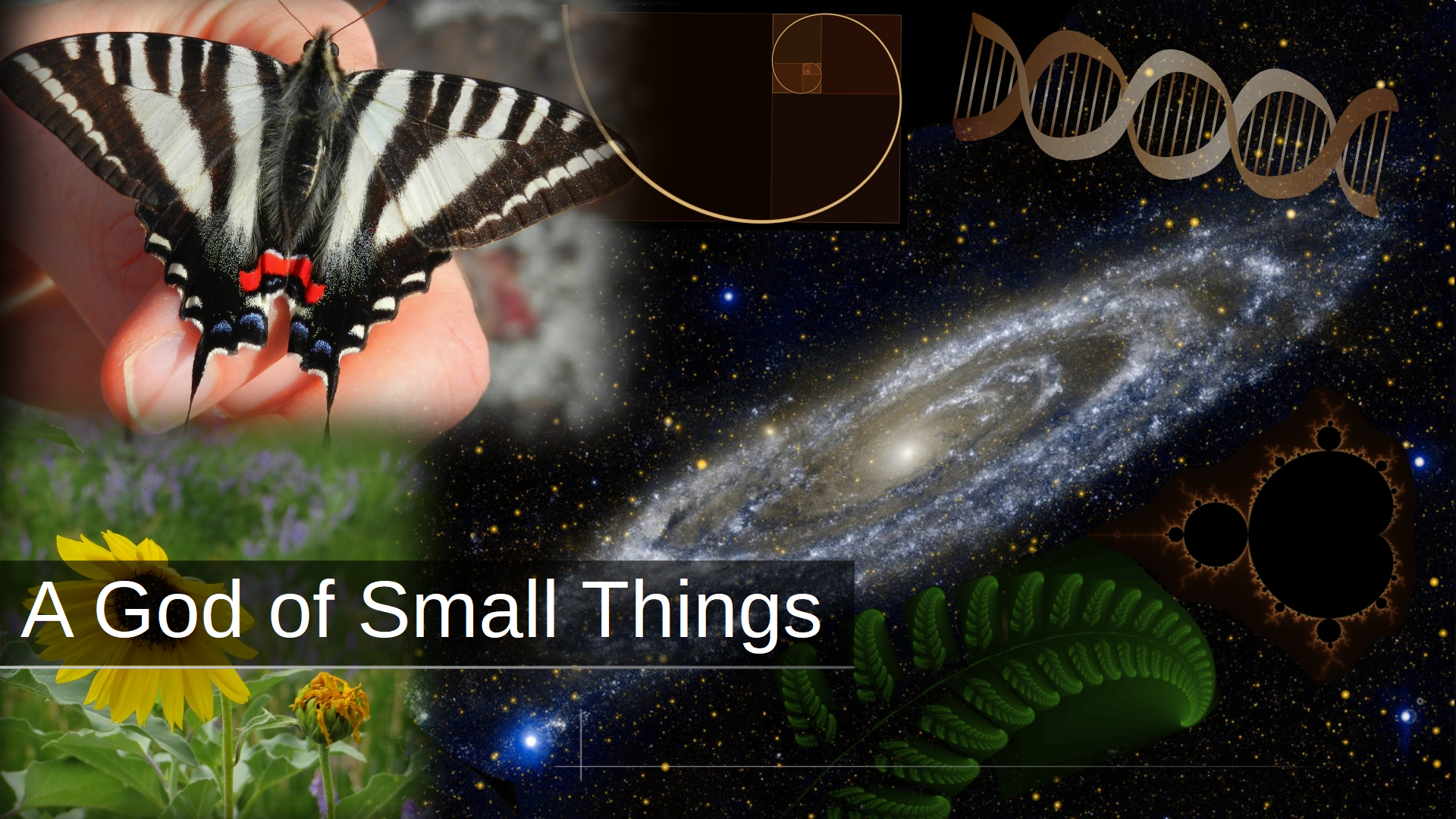
I remember when I was maybe 12 years old, I went over to visit my dad in his office at the academy, as I had done on numerous occasions. This particular day, the math teacher, who was a good friend of ours, had his computer going, and he was testing out a new program he had written. This program was calculating a huge mathematical formula to produce a mathematical picture he called a “fractal.” Now remember this was a few years ago, and computers weren’t as fast then as they are now. This was before the days of Facebook and Google. These were the days when just seeing a grainy photograph displayed on the computer screen was something amazing. I remember sitting, watching, in amazement, as the computer printed out line after line of pixels, and slowly this beautiful, intricate, complex image began to appear on the screen. To my utter amazement, I could then choose an area to zoom in, and the computer would blow up that part of the image and calculate it in perfect detail, again and again.
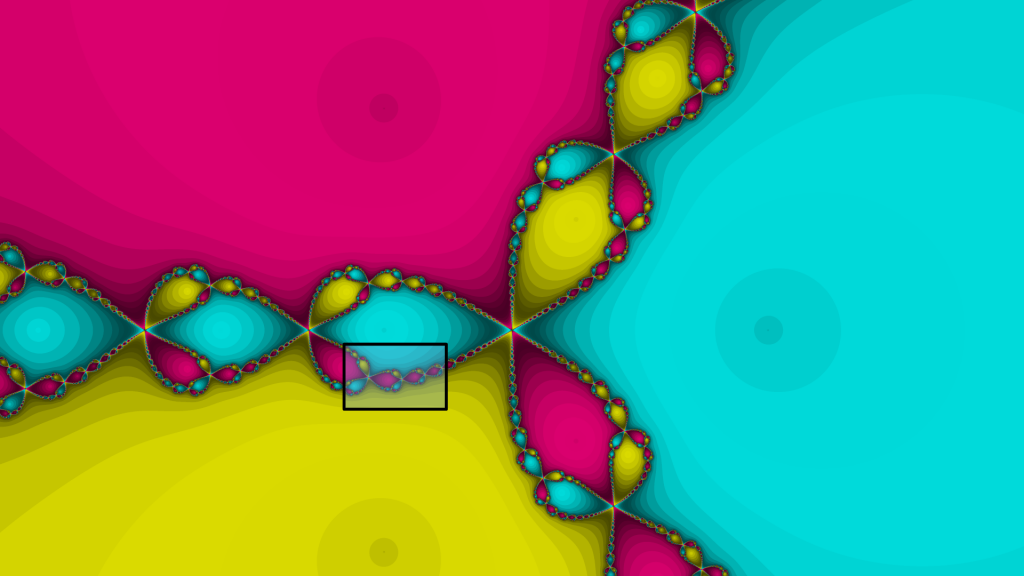
I was 13, I asked my dad to teach me how to program computers. I wanted to learn how to make those amazing images that I’d seen on the school teacher’s computer. Dad showed me the basics of programming and loaned me one of his college textbooks on the subject. I couldn’t understand, or didn’t have patients, for most of the textbook, but I worked through several examples in the back until I got the hang of it.
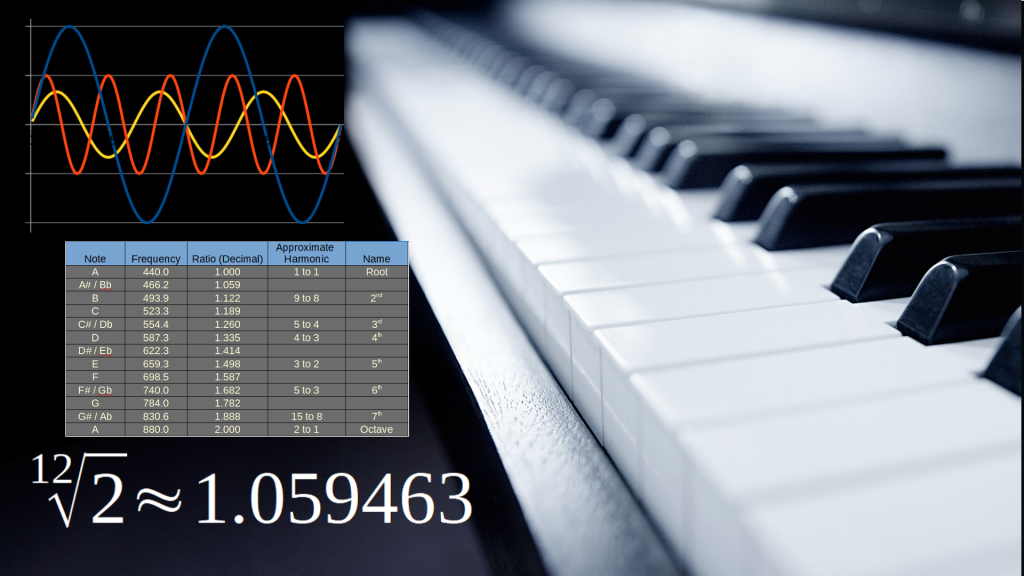
I loved doing mathematical experiments on the computer. I was never a good musician but early on, I took piano lessons from my mom. Just like math drill, I didn’t really like practicing the piano. (To this day I wish I had spent more time practicing the piano…) But I was fascinated by the musical notes, and understanding the interactions of the musical waves at different tones and pitches. And because I had entered this brave world of computer programming, I used some mathematical experiments (that I hardly understood at the time) to calculate the ratio of the frequencies of the 12 tone scale, and made a table that I could use to better understand the relationship of the notes. I was amazed to see the computer printing out ratios for major cords in beautiful relationships, such as 5:4 and 3:2 or 4:3 and 5:3.
I think the thing that was impressed upon my mind, was the amazing beauty and order in this world all around us—the beauty in the little things that we so often take for granted.
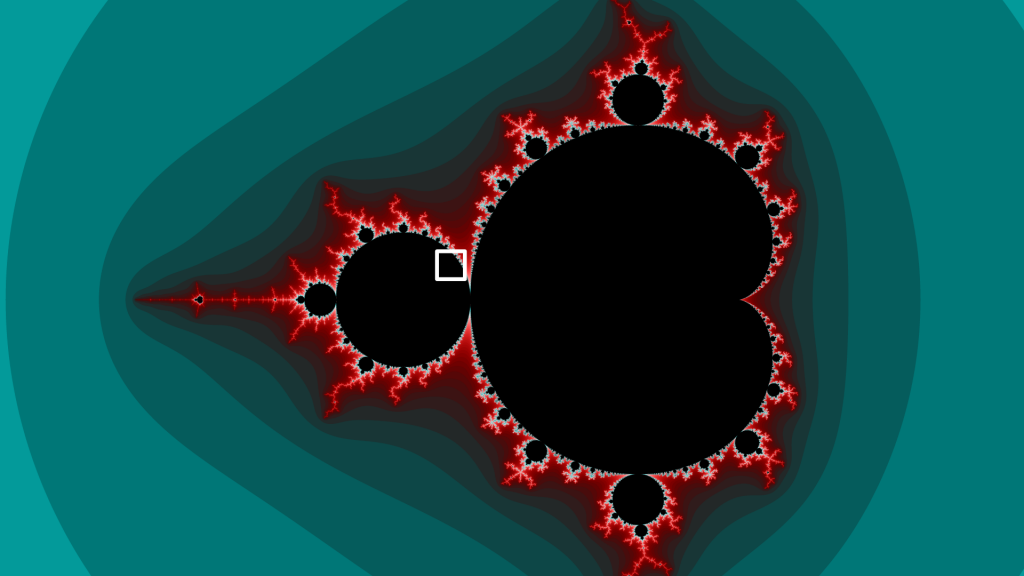
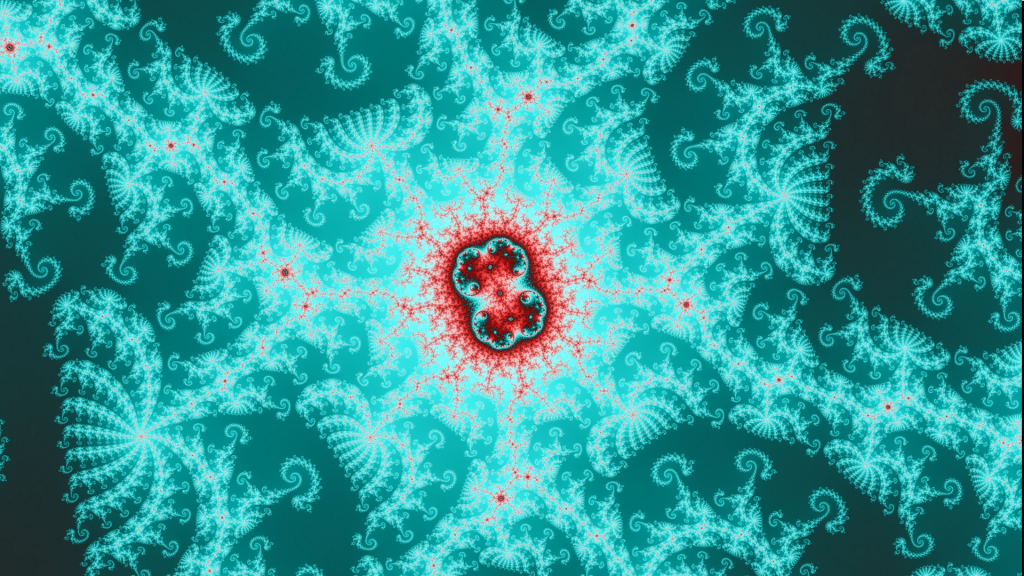
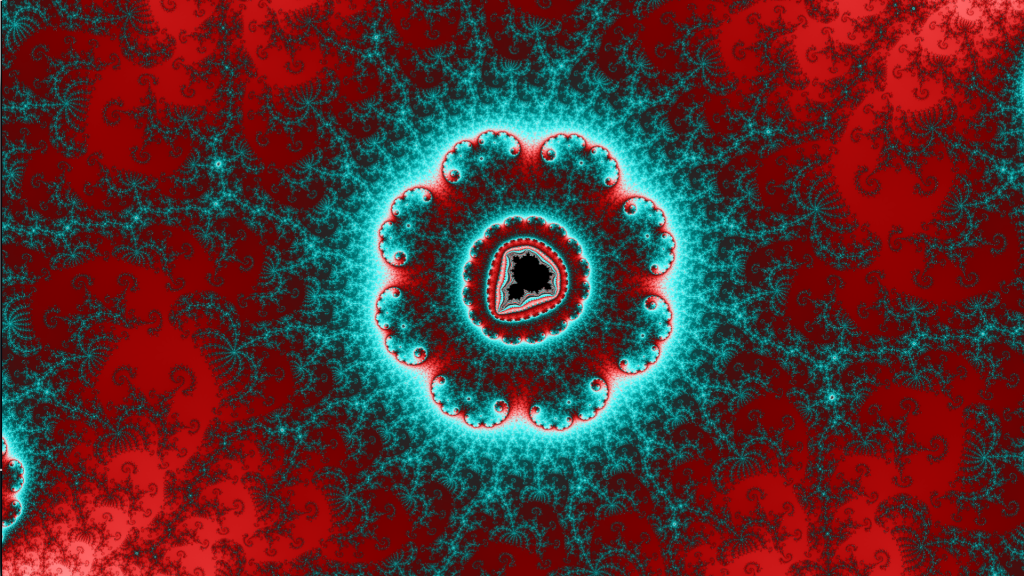
A year or so later I was able to go to the library and check out a book on fractals. The book was filled with computer-generated fractal images, and I was blown away by the beauty and symmetry of the designs. I was amazed at the infinite world of discovery to be found in simple mathematical formulas—an infinite world of infinitely small things. This is a fractal image known as the Mandelbrot set—it’s been called the most complex image in the world—really an infinitely complex image generated by an incredibly simple formula.
I soon learned how to write my own computer programs to generate fractals. It was this exploration of math, I think, that really directed my life toward a career in computer technology.
But what good are math and lots of pretty but abstract art, if it doesn’t relate to the real world? Well, it turns out that this discovery of fractal geometry in the mid- 20th century was a breakthrough in understanding and modeling many real-world phenomena. Fractal models could be used to explain natural shapes that had never been explained before.
“Clouds are not spheres, mountains are not cones, coastlines are not circles, and bark is not smooth, nor does lightning travel in a straight line.” Benoit Mandelbrot
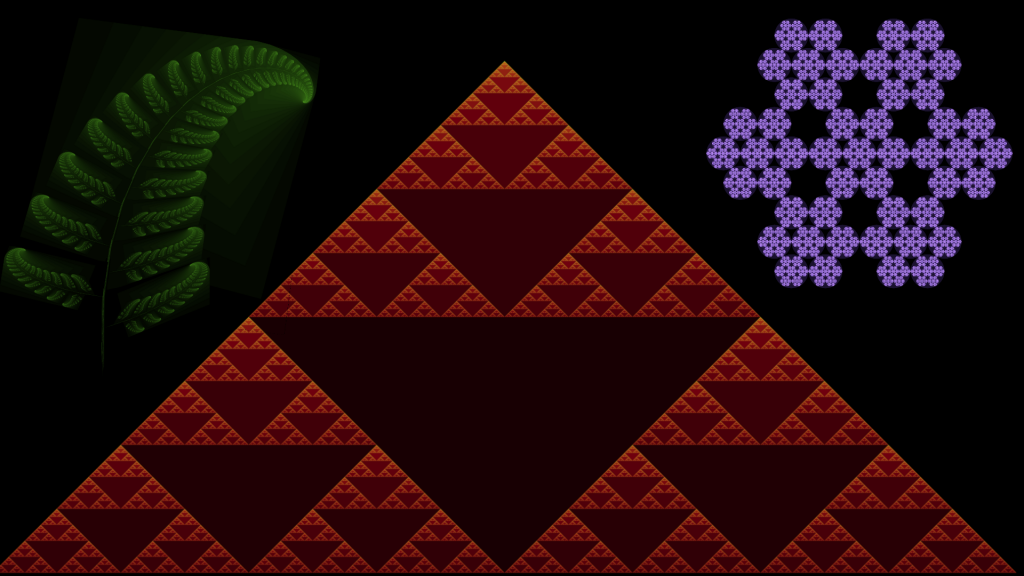
Fractals are shapes that have repeating patterns of complexity at smaller and smaller scales. They’re shapes that defy the normal rules of geometry—unlike circles and squares and triangles, you can’t measure them using elementary mathematics. But using fractal geometry, scientists are discovering that there’s a sort of order and predictability that we can quantify even in seemingly random and unpredictable things of nature. This order at a higher level of complexity is what helps unlock a world of discovery and the ability for the first time to explain some of this complexity in nature.
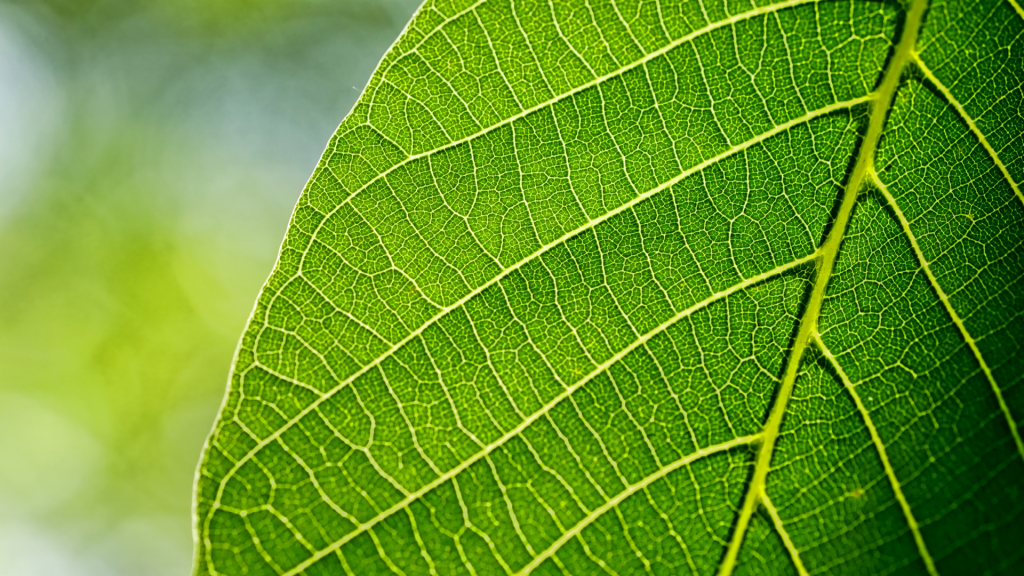
Take for example, the branching veins on a leaf. Now, most of those aren’t straight lines. They’re bent and twisted every which way. Notice how the main stem branches out and out and out, smaller and smaller. The smaller patterns look remarkably similar to the shape of the larger patterns and even to the leaf itself. Look at the branching limbs on a tree, and you see the same pattern repeating itself over and over, from the tree trunk down to the smallest branches. If you were to break off a branch, any of the branches would look surprisingly similar to the tree it came from.
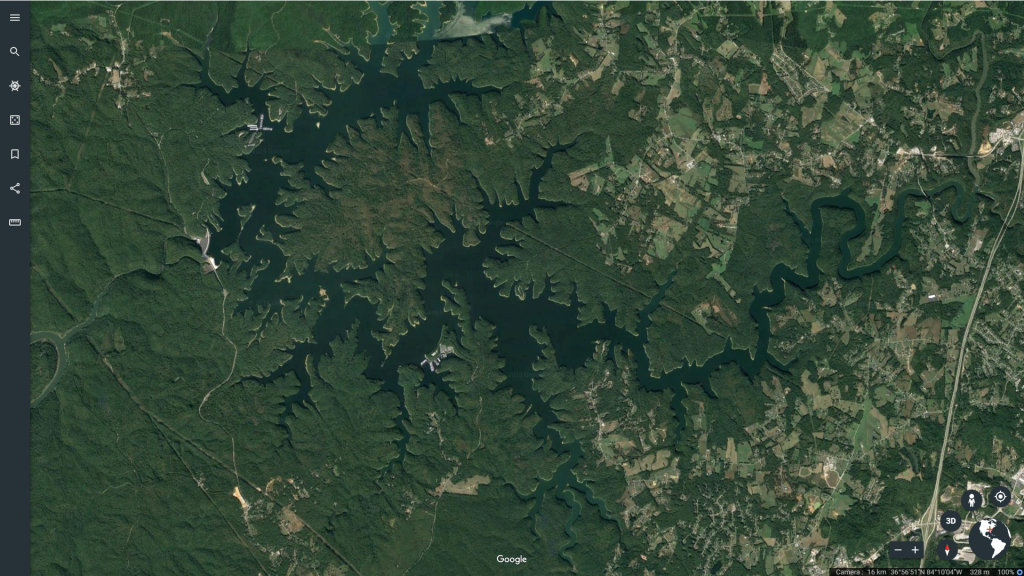
If you could take off right now in a spaceship and fly out over the landscape around London, Barbourville, and Pineville, you would see the same kind of pattern in the branching tributaries repeated over—with more and more of the smaller and smaller tributaries filling every square mile of the whole watershed. Here is a picture of Laurel Lake—see how the branching tributaries stretch in every direction, just like the branches of a tree? These are all examples of natural fractals.
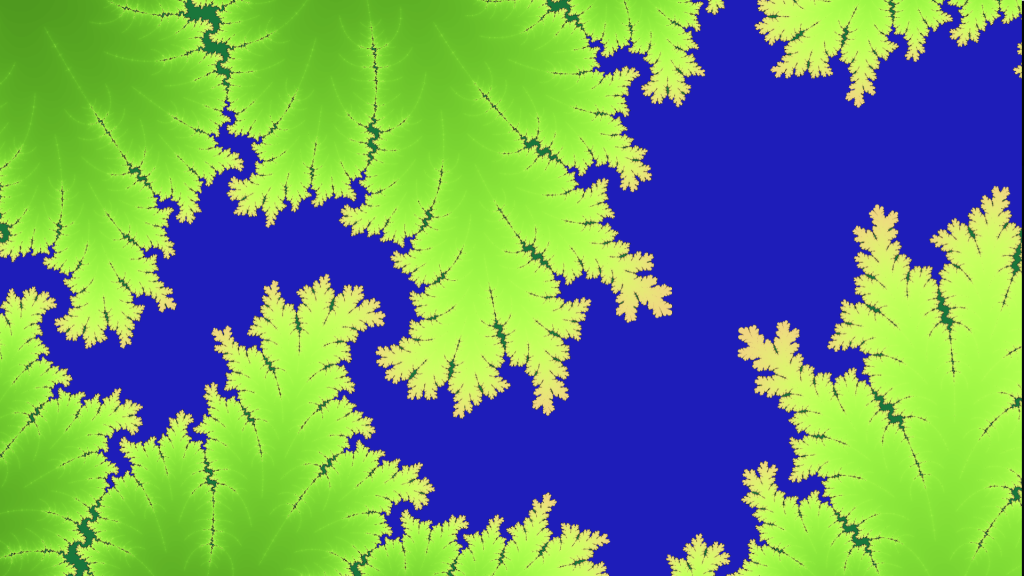
You couldn’t draw a good picture of Laurel Lake using squares, circles, and lines, but we can use computer-generated fractals to help us understand these complex shapes, using simple mathematical formulas. Here is a fractal lake that I made on my computer—does the rough shoreline look at all like some of the lakes you might find around here?
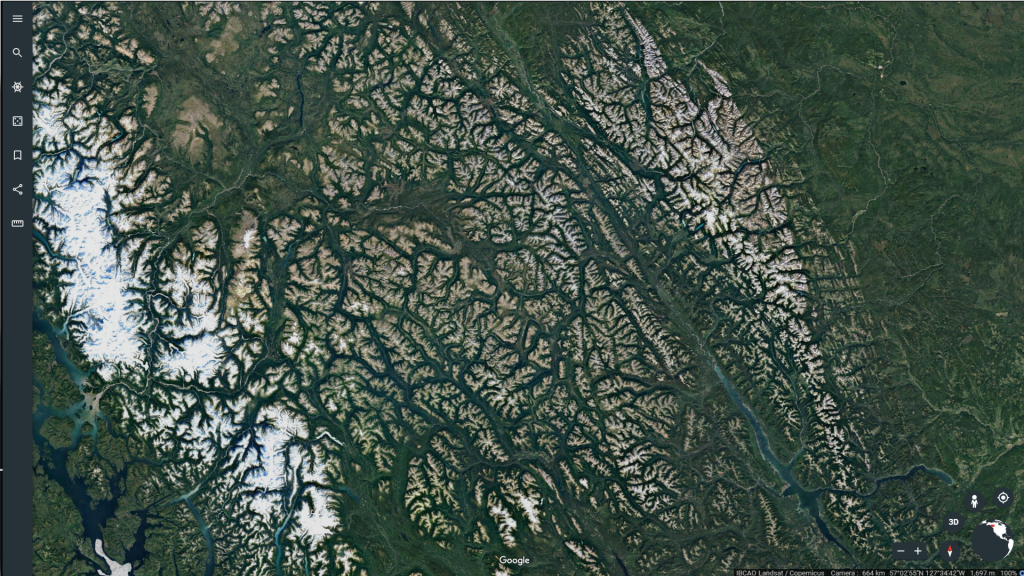
It’s amazing how you can find similar patterns is vastly different objects in nature. Take this satellite photo of the mountains of northern British Columbia.
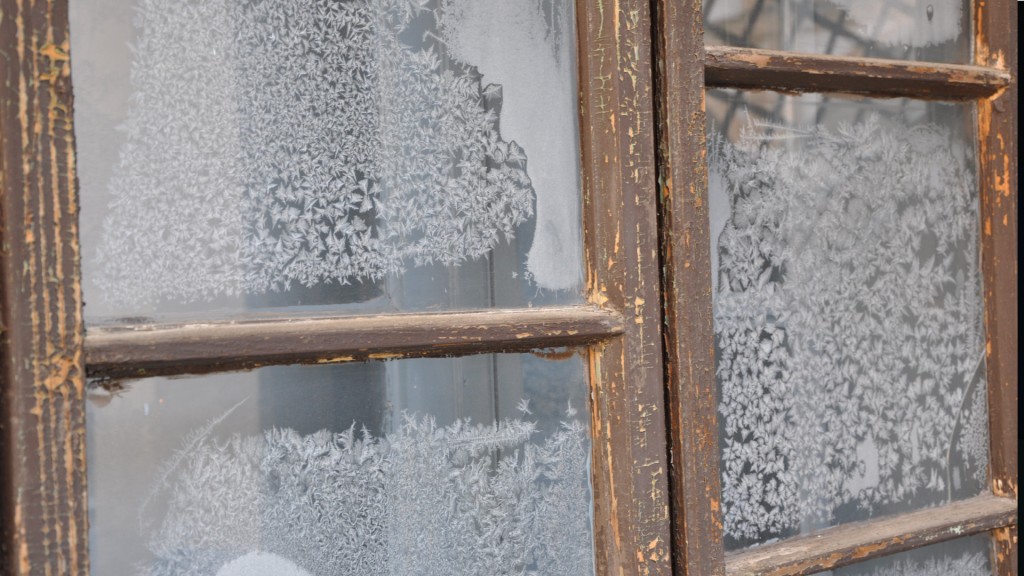
Compare that with these frost crystals, growing on a cold windowpane.
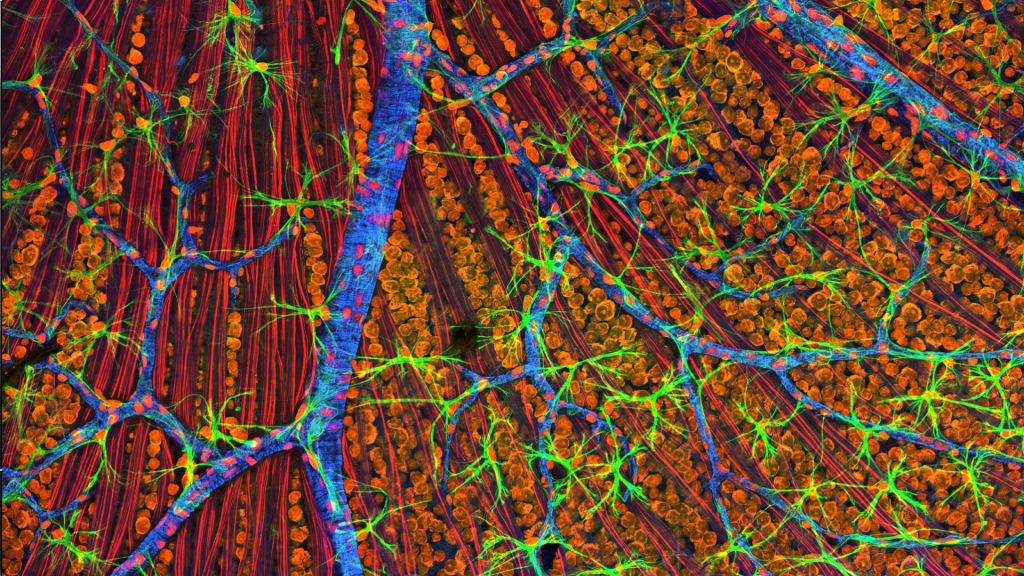
If you could look down inside your body and see the blood vessels in your eye, or your lungs, or even the tiny capillaries under your skin, you would see thousands and even millions of tiny, tiny tubes, branching out from the arteries, taking blood cells filled with oxygen to every tiny cell in your body. What’s more amazing is that all these blood vessels coalescing together again into your veins, and take the blood back to your heart and lungs, where it starts its journey over again.

One of my favorite natural fractals is the fern. Notice how each leaf of the frond is a miniature copy of the whole frond.
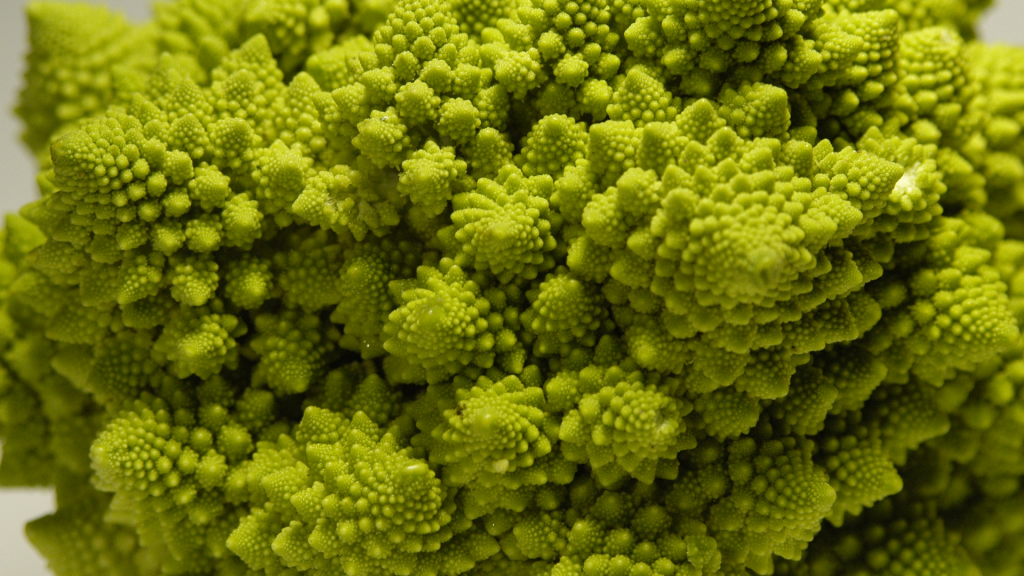
Look at the abstract wonder of this bunch of romanesco cauliflower
How can this happen? Who taught the plants how to do math? We don’t even have time to talk about the Fibonacci numbers, and golden ratios, or hundreds of other amazing aspects of creation.
How is it that the frost on a window shares a pattern with vast mountain ranges? How is it the branching riverbeds share the same shapes as branching trees? ↓ How is it veins on a leaf share a pattern with blood vessels in our bodies?
A believe all these are the unmistakable fingerprints of a God Who has designed all things to reflect His character of love and perfection.
If we believe that the world we see is the work of an intelligent creator, then it would follow that we can learn something of His character by studying His works. Just like you can learn something about an artist by looking at his paintings, or a musician by listening to his works, so we can learn about God by studying His creation.
Lot’s of people have tried to come up with an explanation of how we got here. Lot’s of people spend their lives trying to explain the wonder and complexity of this world—and the popular theory is that we got here through a long process of evolution. But evolution fails on many points to explain the world we see. It could, perhaps, explain a world where everything contributes to the survival of the fittest, but evolution cannot explain the existence of order and beauty in the midst of chaos—it cannot explain the exquisite painting of a sunset, or the colorful flowers of wood and field.
But there is story that does explain these things—it’s found in the word of God. The book of Genesis, the first book of the Bible, starts out with these words: “In the Beginning. God…”
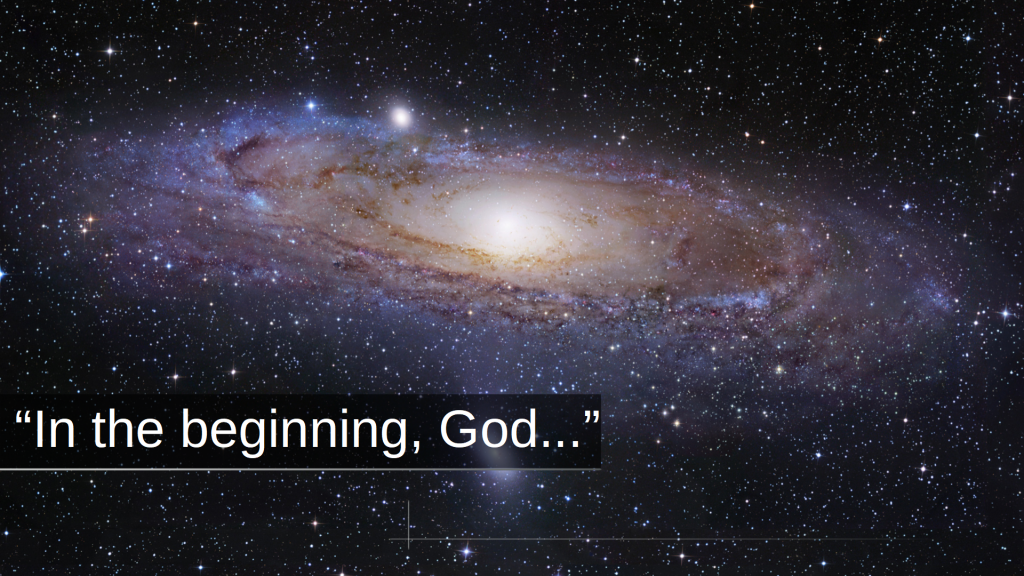
God—who is really plural but is acting as one—Elohim—in the beginning, it says, He speaks: “Let their be light.” and there was light! By His word, He creates the world and every living thing in six days, and then rests on the Sabbath day.
Yes, if my Bible is true, He is the God who created the universe. He holds the worlds in His hands! The great and mighty—the transcendent God. ↓
And yet, in the smallest creatures of this world, ↓yes even in the very smallest cells, we see the fingerprints of One Who cares for the smallest things.
That’s why I’ve titled my message today, “A God of Small Things.”
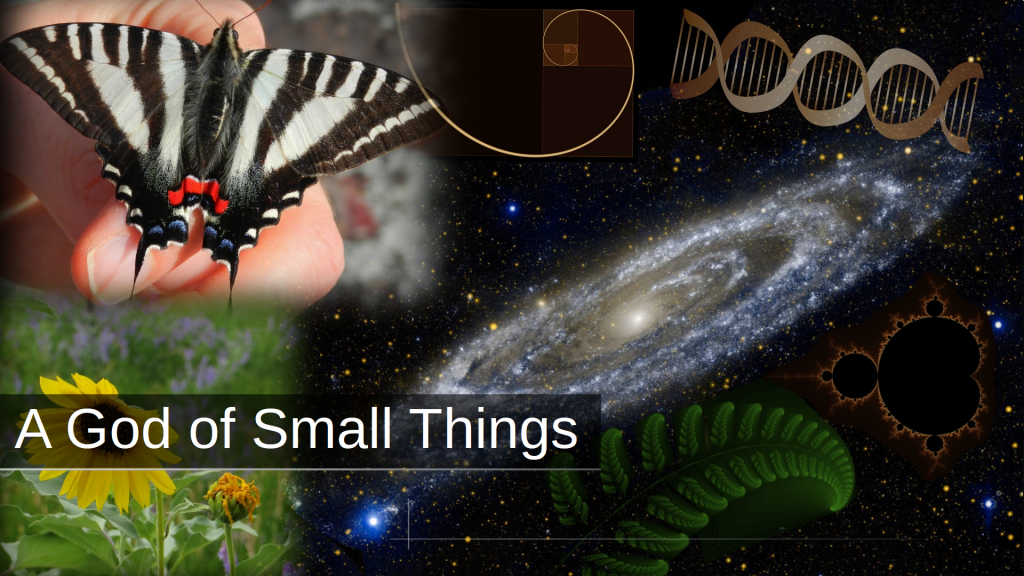
A God of Small Things? What do you mean? I mean, creating the world—that doesn’t sound very small. No—that’s huge. Creating stars and galaxies? That’s even bigger. And I’m not taking that for granted. But I think, too often, we think of the “Bigness” of God, and forget how much he cares about the littlest things.
Psalm 8:3-5
3 When I consider Your heavens, the work of Your fingers,
The moon and the stars, which You have ordained,
4 What is man that You are mindful of him,
And the son of man that You visit him?
5 For You have made him a little lower than the angels,
And You have crowned him with glory and honor.
The prophet Ezekiel saw a vision of God in heaven, riding in a magnificent chariot, with magnificent turning wheels—big wheels, and little wheels. It says “a wheel within a wheel.” (Ezekiel 1:16) It describes how these wheels moved together in perfect order—the bigger ones and the smaller ones, all moving perfectly together.
You know, if you look through the biggest telescopes into outer space, you see magnificent galaxies, 100,000 light years across. Huge whirling wheels of stars. If you look at our sun and the orbit of the planets in our solar system, you can imagine them forming a great wheel, every year going round and round in the same path. The earth forms a great blue sphere—a bubble of warmth and life—spinning through space like a glowing wheel. If you look into the tiniest particles known to man—the subatomic particles that make up the atoms of matter, you see electrons orbiting a heavy nucleus, and I imagine if you could see them, each spinning atom might look a little wheel—a wheel within a wheel.
I’m not saying that’s literally what Ezekiel saw in his vision—I don’t know what he saw, but what a picture of God. A God who rides on the biggest galaxy’s, but One Who isn’t too big to care about the tiniest atom.
Do you think God cares about little things? Let me tell you a story. I was getting ready to go to Africa as a missionary. I had just helped my friend, Kristina, set up a website for her new ministry, and we were hosting it on an old computer a friend had given me. One evening, not long before I was going to leave, that computer died. It just quit. No matter what I did, it wouldn’t turn on. So, you know what I did? I prayed for that computer. It felt kind of funny, praying for a computer. Does God really care about computers? I’ve prayed for sick people before, and prayed for lots of things, but praying for a computer? It’s such a small thing. But you know, right after I finished praying, I turned that computer on. And it ran the whole time I was gone to Africa. I called it my miracle computer. I’d be almost ashamed to tell you how many times I’ve prayed for a computer since then. Actually—no, I’m not. I’m more ashamed of all the times I haven’t prayed over countless little situations, that God is more than ready with a solution to.
You know, as I look at the universe, I see a picture of God—not that the universe is God, but as Paul says in Romans, we can know about God through the things He has made. I look to the heavens and I see a picture of perfect order a beauty – a fractal of complexity that’s bigger than anyone can imagine. I don’t believe that our world is the only planet God has made—no, somewhere around those countless stars of the heavens are other worlds, where God has created perfect and wonderful creatures. We know about some of these heavenly creatures from the Bible—the angels that surround God’s throne, and the living creatures here in Ezekiel’s vision. We read in Revelation about a great war that took place in heaven, long before the creation—a war among angels, and between Christ and Satan—when Satan was cast to this earth along with his rebellious angels.
Job 1:6-7
6 Now there was a day when the sons of God came to present themselves before the Lord, and Satan also came among them.
7 And the Lord said to Satan, “From where do you come?”
So Satan answered the Lord and said, “From going to and fro on the earth, and from walking back and forth on it.”
Jesus calls Satan the “Prince of this world.” He is the prince, not by right, but because he usurped Adam’s role.
In this heavenly counsel, it says that the “sons of God came” together. It doesn’t appear that any humans were there—Job certainly wasn’t. Since the fall of man, humans have not been able to commune with God face to face. But Satan was there, presumably with others. And the fact that God asks him, “Where do you come from” implies that the others came from other places. What places? We don’t know, but they could have been from these other worlds.
The creation account in Genesis 1:16 says:
God made two great lights: the greater light to rule the day, and the lesser light to rule the night. He made the stars also.
He made the stars also, but it doesn’t say that God made all the stars and the whole universe on the fourth day of creation.
So what am I saying? That for eons of time, God has been creating worlds and galaxies in a perfect universe – a fractal of perfection and beauty – the reflects His perfect, infinite, and unchanging character of love. He has filled this worlds with creatures who love, adore, and praise Him—and he cares for each one as though they were the only one in the universe.
Yet when Satan rebelled, and then duped this world into sin, the perfect universe was marred. ↓The fractal was no longer beautiful, all the way to the smallest things. Because on this earth, death, sin and suffering reigned. And if God were like you and me, he might have brushed it off. What’s one tiny dot, after all, in this infinite universe? But He didn’t. Praise God, He didn’t brush it off—Praise God, He cares about little things!
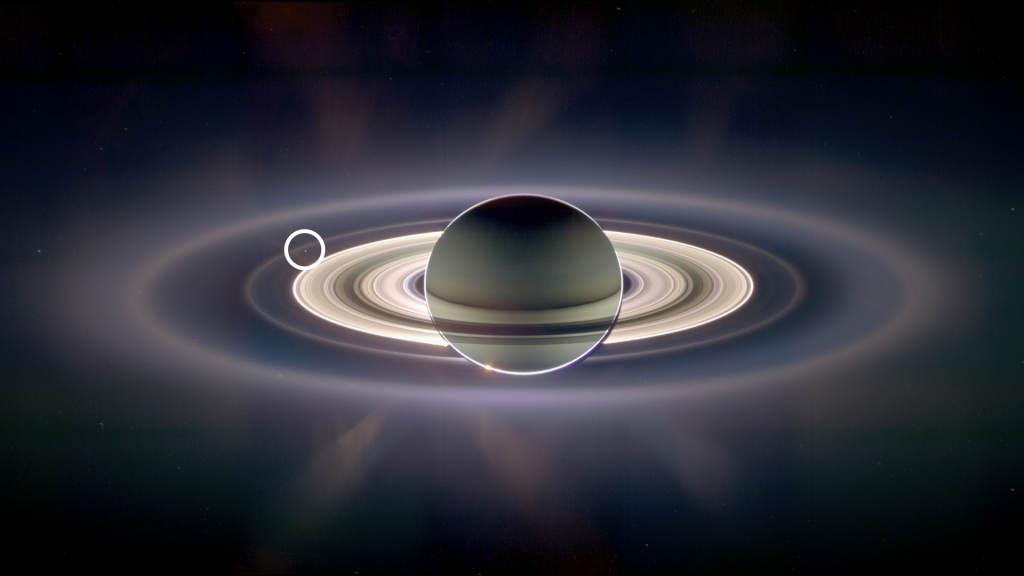
Take a look at this picture. This is a photograph—actually a composite photograph, taken by Cassini, a deep space probe, on September 15, 2006. For a few hours, while Cassini floated in the shadow of Saturn, it turned its cameras toward the sun and took this stunning photo of Saturn and it’s rings. But right here, I want you to notice something. You see the tiny dot (circled) in the left of Saturn’s rings? It’s actually not in the rings, but behind the rings—and it’s a planet. That is earth—seen from nearly a billion miles away.
Why would God care for a world that is a mere speck in this vast universe of His? I can’t answer that question, but I can tell you this: He does.
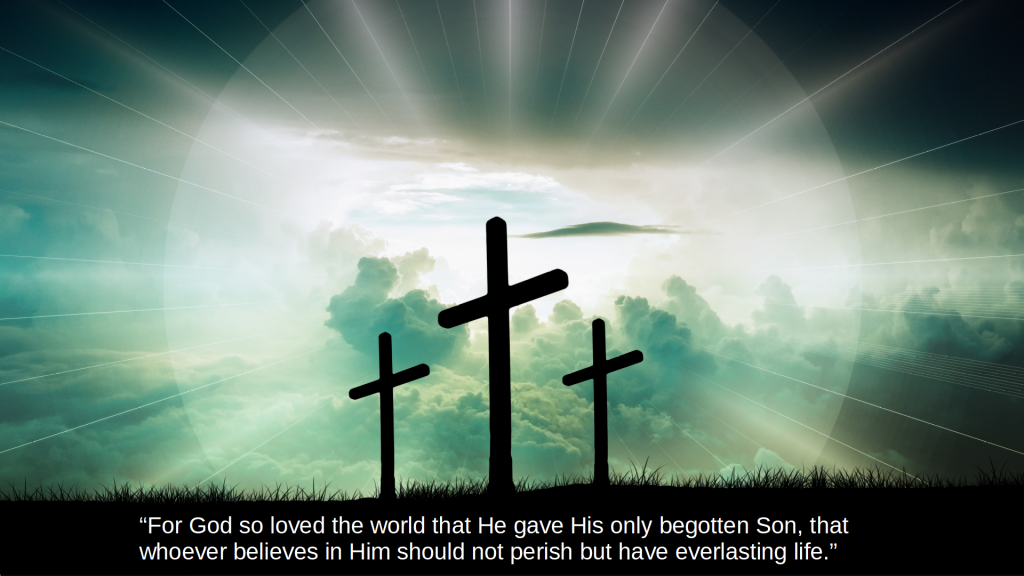
John 3:16 For God so loved the world that He gave His only begotten Son, that whoever believes in Him should not perish but have everlasting life.
And if God cares for this small world, enough to send His Son, Jesus, how much do you think He cares for you? Is there anyone too small for Him to notice? Is there anything in your life too small for Him to care about?
Jesus says in Matthew 6:26-30:
26 Look at the birds of the air, for they neither sow nor reap nor gather into barns; yet your heavenly Father feeds them. Are you not of more value than they? 27 Which of you by worrying can add one cubit to his stature?
28 “So why do you worry about clothing? Consider the lilies of the field, how they grow: they neither toil nor spin; 29 and yet I say to you that even Solomon in all his glory was not arrayed like one of these. 30 Now if God so clothes the grass of the field, which today is, and tomorrow is thrown into the oven, will He not much more clothe you, O you of little faith?
How well does Jesus know you? In Matthew 10:29-31 he says:
“Are not two sparrows sold for a copper coin? And not one of them falls to the ground apart from your Father’s will. 30 But the very hairs of your head are all numbered. 31 Do not fear therefore; you are of more value than many sparrows.”

Yes, our Heavenly Father is the God and Creator of the universe—but I like to think of Him best, as the God of small things. Because it’s by working through the smallest things that He is restoring, again, the perfect harmony of the universe. One day, soon, the blight of sin will be no more. Jesus has taken the curse for us, and broken the power of sin.
But my question for you is this: what about your life? If God is the God of small things, is He the ruler of every area of your life? Is there anything too small for Him to care about? He’s not out to get you, but He is working in us to restore our hearts to the perfect model of the universe. The fractal is marred, but by His grace, He’s putting it back together, so that in the tiniest corner of the universe—in us—he can see a miniature picture of the biggest One in the universe—Himself.
Will you let him? He’s got His eye on you!
Leave a Reply